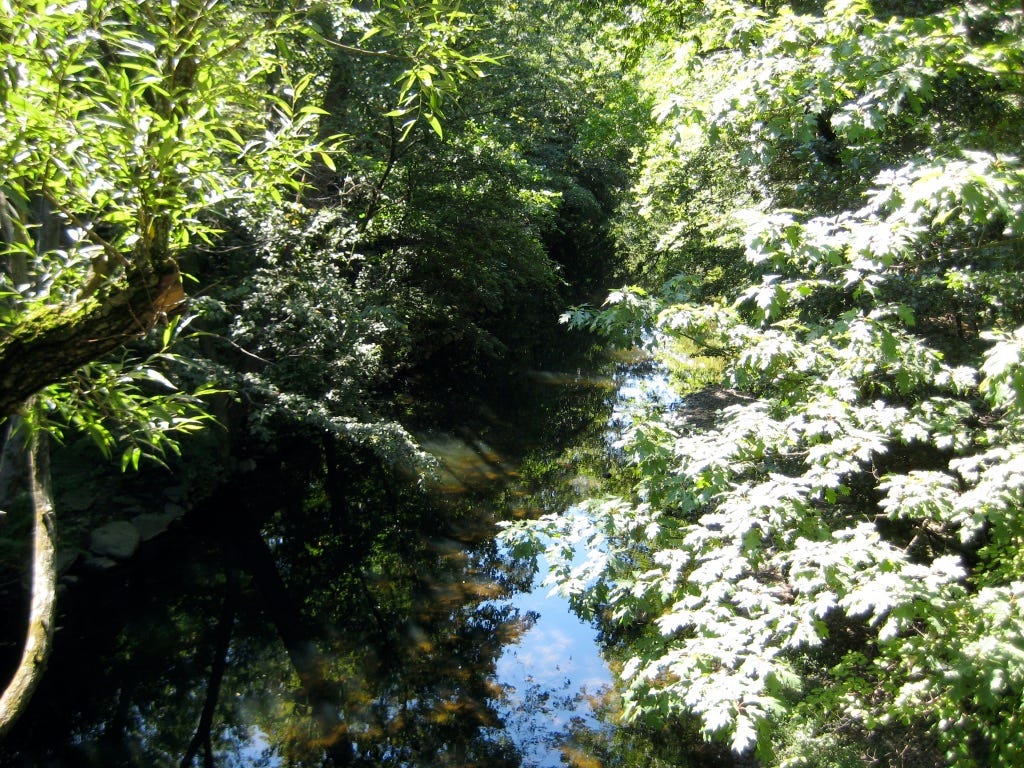Idyllic Landscapes, Arcadia, Shangri-La, Beauty Spots
Just north of Hargrove Road is a spot that we must admit is lovely, where the river runs clear and cool and deep through a small clearing. On a summer day, with iridescent dragonflies gleaming in the sun, it can be an idyllic spot for a cooling swim.
Boating on the Bolotomy
These could be photographs taken at that idyllic spot just north of Hargrove Road. They are not photographs taken at that idyllic spot just north of Hargrove Road, but they could be.
Lighten the Load, Jettison, Jetsam
Raskol sighed. “We’ve got to jettison some of this rubbish,” he said. He reached for the nearest bag and tossed it over the side.
“Hey, wait!” I cried. “Don’t just toss things out indiscriminately. We’re going to need some of this stuff. We’ve got to go through each of the bags and sort out the essentials from the inessential items. Then we’ve got to figure out a plan for rationing our food and water so that we know how much we can do without.”
“All right,” he said. “Here’s the plan—we’ll throw out all the food and trust to luck.”
I sighed. I began picking through the supplies and packing the nonessentials into one of the bags. Raskol sat in his end of the boat and watched.Little Follies, “Life on the Bolotomy”
Like Peter and Raskol, John Jeffries and Jean-Pierre Blanchard faced the necessity of deciding what to jettison during their attempt to cross the English Channel from Dover to Calais, in 1785, when their balloon began to sink:
The balloon . . . picking up a gentle southerly airstream began to drift towards Calais, but steadily lost height over the sea. By two-thirds of the way across they had progressively jettisoned all the sand ballast, all their food, and most of their technical equipment, except the precious barometer and one bottle of brandy. But the balloon continued to drop, until it was well below the level of the approaching cliffs of the Pas de Calais. They now began to perform a kind of aerial striptease, as Jeffries recorded in his flight diary. ‘. . . yet still approaching the sea very fast, . . . my little hero stripped and threw away his coat (great one). On this I was compelled to follow his example. He next cast away his trowsers. . . .’
With nothing remaining as ballast except the bottle of brandy, they were left standing in their underclothes, wearing only their cork jackets.
Once clear of the coastal updraught, the balloon began an even faster final descent towards the heavily wooded region of Guines forest. A violent and possibly fatal crash-landing in the trees seemed imminent and inevitable. Jeffries, however, maintained a detached, scientific assessment of the situation. He pointed out to Blanchard that there was still one last way of throwing out personal ballast: ‘it was contained within ourselves’. Seizing the leather bladders hung in the balloon’s rigging as flotation devices, they carefully urinated into them, and threw the contents over the side. In his Narrative Jeffries apologised for introducing this ‘trivial and ludicrous detail’, but pointed out that it was precisely the sort of information that a scientific writer should record.
At all events, this ‘evacuation’ sufficiently checked the rate of their descent, so that the gondola bounced roughly across the tops of the trees instead of plunging violently through the canopy.Richard Holmes, The Age of Wonder: How the Romantic Generation Discovered the Beauty and Terror of Science
[more to come on Tuesday, August 3, 2021]
Have you missed an episode or two or several?
You can catch up by visiting the archive.
At Apple Books you can download free eBooks of “My Mother Takes a Tumble” and “Do Clams Bite?” the first two novellas in Little Follies.






